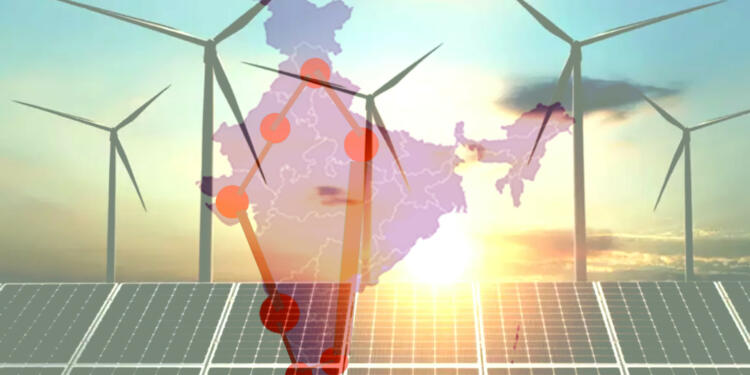During the last few years, India has made some remarkable progress in Green energy landscapes. 2022 won’t be much different. The union cabinet has kicked up the new Gregorian year with the approval of the ‘Golden Quadrilateral’ of Green Energy.
Cabinet approves the second phase of Green Energy Corridor
Cabinet Committee on Economic Affairs (CCEA), chaired by Prime Minister Narendra Modi has given its nod to one of the biggest Green Energy projects in India. The project entails total spending of Rs 12,000 crores by the Union government and other concerned parties.
The amount will be utilised for finalising construction works related to the second phase of the Green Energy Corridor. Circuit transmission lines of approximately 10,750 km in length will be constructed across the country. Additionally, around 27,500 megavolt amperes transformation capacity of the substation will be added.
After the completion, the project will help in the evacuation of 20 Gigawatts of power across the country. Power evacuation facility means a facility that allows generated power to be immediately transmitted from a generating plant to the grid for further transmission/ distribution to load centres.
7 states to benefit from the project
The second phase of the Green energy corridor will mainly benefit seven states. These are- Gujarat, Rajasthan, Kerala, Tamil Nadu, Karnataka, Uttar Pradesh, and Himachal Pradesh. When connected with a straight line on Indian maps, these states take a rough shape of a quadrilateral.
Read more: India, now a world leader in renewable energy production
Out of the total cost of Rs 12,031 crores, the Union government will be contributing approximately 33 percent of the project cost. KfW, a German state-owned investment, and development bank group will be providing loans for this project. The project is expected to be completed by 2026. After the completion, it is expected that consumers will have to pay much lower electricity bills for power generated from renewable energy sources.
Green Energy Corridor-Accelerator of India’s Green energy mission
Green Energy Corridor is a crucial component of India’s mission to produce 500 GW of electricity through renewable sources by 2030. More than 80 percent of projects in the first phase have already been completed. Under the first phase, 9,700 km of transmission lines and 22,600 MVA of substations are being constructed. The total cost of projects under the first phase is Rs 10,141.7 crore.
While all other nations are finding it hard to convince their population about the importance of greenery, India is quite ahead when it comes to fulfilling its commitments towards nature. In 2015, India had promised to produce 175 GW of renewables by 2022. We are just 34 GW away from fulfilling this goal.
Read more: You want us in your green energy agenda, get us in NSG,’ India’s nuclear message to the West
Currently, we have 41.09 GW of solar energy, 39.44 GW of wind power, 10.34 GW of BioPower and 4.8 GW of small hydro plants. The rate of growth in renewables is far more than the rate of growth in coal-based energies. This needs to continue in order to fulfil India’s goal of producing zero carbon dioxide by 2070.































